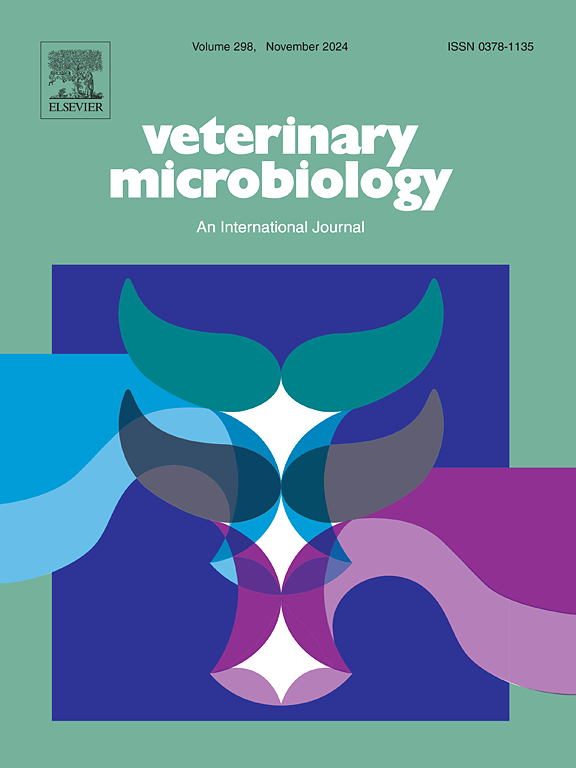S5092 inhibit ASFV infection by targeting the pS273R protease activity in vitro
IF 2.4
2区 农林科学
Q3 MICROBIOLOGY
引用次数: 0
Abstract
African Swine Fever (ASF) is a highly infectious viral disease caused by African swine fever virus (ASFV). Currently, there is no effective vaccine, and it is urgent to discover antiviral agents to deal with the epidemic. ASFV pS273R is the only known cysteine protease that catalyzes the maturation of the polyprotein precursors pp220 and pp62 through proteolytic cleavage, a critical step in ASFV assembly. In this study, we performed a high-throughput screening of an FDA-approved drug library to identify several compounds that target the active site of the ASFV pS273R enzyme via molecular docking. We initially identified 778 molecules based on the “Drug-like Five Principles”, with S5092 emerging as the most promising candidate. S5092 is a prodrug that can be metabolized into Fenbendazole (FBZ) and Oxfendazole (OFZ). In exogenous cleavage experiments, S5092, FBZ, and OFZ significantly inhibited the cleavage of the viral polyprotein pp220 and pp62, as well as the host antiviral protein gasdermin D (GSDMD) by pS273R, indicating that these compounds inhibit the enzymatic activity of pS273R. Importantly, S5092 and its metabolites reduced the level of ASFV infection, as evidenced by the detection of viral genomic copies and viral titer. Collectively, our findings indicate that S5092 suppresses ASFV infection by inhibiting the enzyme activity of pS273R, a multifunction protein, positioning it as a novel and specific drug candidate for the prevention and control of ASF.
求助全文
约1分钟内获得全文
求助全文
来源期刊

Veterinary microbiology
农林科学-兽医学
CiteScore
5.90
自引率
6.10%
发文量
221
审稿时长
52 days
期刊介绍:
Veterinary Microbiology is concerned with microbial (bacterial, fungal, viral) diseases of domesticated vertebrate animals (livestock, companion animals, fur-bearing animals, game, poultry, fish) that supply food, other useful products or companionship. In addition, Microbial diseases of wild animals living in captivity, or as members of the feral fauna will also be considered if the infections are of interest because of their interrelation with humans (zoonoses) and/or domestic animals. Studies of antimicrobial resistance are also included, provided that the results represent a substantial advance in knowledge. Authors are strongly encouraged to read - prior to submission - the Editorials (''Scope or cope'' and ''Scope or cope II'') published previously in the journal. The Editors reserve the right to suggest submission to another journal for those papers which they feel would be more appropriate for consideration by that journal.
Original research papers of high quality and novelty on aspects of control, host response, molecular biology, pathogenesis, prevention, and treatment of microbial diseases of animals are published. Papers dealing primarily with immunology, epidemiology, molecular biology and antiviral or microbial agents will only be considered if they demonstrate a clear impact on a disease. Papers focusing solely on diagnostic techniques (such as another PCR protocol or ELISA) will not be published - focus should be on a microorganism and not on a particular technique. Papers only reporting microbial sequences, transcriptomics data, or proteomics data will not be considered unless the results represent a substantial advance in knowledge.
Drug trial papers will be considered if they have general application or significance. Papers on the identification of microorganisms will also be considered, but detailed taxonomic studies do not fall within the scope of the journal. Case reports will not be published, unless they have general application or contain novel aspects. Papers of geographically limited interest, which repeat what had been established elsewhere will not be considered. The readership of the journal is global.
 求助内容:
求助内容: 应助结果提醒方式:
应助结果提醒方式:


